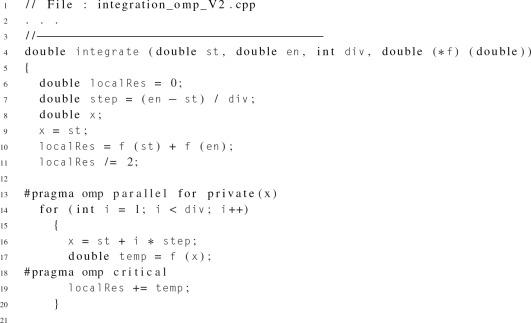In the realm of golf, the significance of a consistent putting stroke is paramount for achieving peak performance on the course.The intricacies of this fundamental skill are deeply rooted in the harmonious interplay of grip, stance, and alignment—elements that not only influence the mechanics of the stroke but also determine the player’s psychological readiness in high-stakes situations.This exploration delves into advanced strategies aimed at optimizing the putting method, thereby enhancing stroke consistency.By systematically examining the role of each component and integrating tailored practices,golfers can cultivate a reliable putting routine that withstands the pressures of competitive play. This analytical approach will illuminate actionable insights that are essential for players striving to refine their putting technique and improve overall game performance.
Understanding the Role of Grip Mechanics in Stroke Consistency
grip mechanics play a pivotal role in achieving consistent putting strokes. A player’s grip is the primary interface between them and the putter, making it essential to cultivate a grip that fosters stability and control during the stroke. A well-positioned grip can enhance the feel of the putter and facilitate a more natural motion, minimizing unnecessary tension in the hands and wrists.To achieve this, golfers should focus on:
- Grip Pressure: Maintaining a light grip can prevent tension, promoting fluid movement.
- Hand Positioning: Ensuring the hands are appropriately placed on the putter to facilitate a straight back and through motion.
- Grip Type: Selecting a grip style (such as conventional, cross-handed, or claw) that supports personal comfort and consistency.
The mechanics of grip extend beyond simple hand placement; they encompass the concept of wrist angle and its impact on clubface alignment. An optimal wrist angle allows for an efficient stroke path,aligning the putter face squarely at impact. It is advantageous for players to experiment with slight modifications in wrist angle to identify what feels most natural while ensuring consistent results. furthermore, regular practice can help solidify muscle memory and reinforce the desired grip mechanics, leading to improved performance under varying pressure conditions.
Additionally, understanding how grip mechanics relate to stroke tempo and rhythm is critical. A consistent grip correlates with a more uniform tempo, which is vital for precise distance control on the greens. To facilitate this connection, golfers should consider the following strategies:
- Drills: Incorporating grip-focused drills into practice sessions to reinforce muscle memory.
- Feedback: Utilizing video analysis or swing coaches to assess hand positioning and grip efficacy.
- Mindfulness: Engaging in conscious practice to cultivate awareness of grip mechanics during actual play.
Establishing an Effective Stance for Improved Alignment and Balance
Achieving proficiency in putting requires an effective stance that promotes both alignment and balance. A well-structured stance enables golfers to maintain consistency throughout their stroke, ensuring they can replicate their movements irrespective of course conditions. It is essential to establish a posture that optimally positions the body for a accomplished putt.
- Foot placement: Positioning the feet shoulder-width apart helps create a stable base. Distributing weight evenly across both feet is vital for maintaining balance throughout the stroke.
- Knee Flexion: A slight bend in the knees allows for better mobility and promotes a more fluid stroke. This flexibility aids in adjusting to varying green speeds.
- Hip Positioning: Proper hip alignment ensures that the golfer can rotate effectively during the stroke.This rotation is key to transferring energy into the putt.
Furthermore, integrating visual alignment aids into the stance can substantially enhance putting effectiveness. Swings can be analyzed more accurately when the eyes are directly over the ball, allowing for precise alignment with the target line. Athletes should consider the following elements to refine their visual perspective:
| Visual Alignment Factors | Description |
|---|---|
| Ball Position | Align directly under the eyes for optimal viewing. |
| Target Line | Visualize an imaginary line from the ball to the hole to aid direction. |
| Equipment Markings | Use alignment lines on the putter or ball to ensure consistency. |
establishing a solid stance encompasses the foundation of a golfer’s putting technique. By meticulously considering factors such as foot placement and visual alignment, players can significantly reduce variability in their strokes. This strategic approach fosters an environment where consistency thrives, particularly during high-pressure situations on the course.
Incorporating Sensory Feedback Techniques to enhance Stroke Accuracy
Incorporating sensory feedback techniques into practice can significantly enhance putting stroke accuracy. By utilizing various methods to engage both visual and tactile senses, golfers can build a more consistent and repeatable stroke. **Visual feedback** is paramount; players should focus on the target line and the speed of their stroke. Tools like alignment sticks can assist in maintaining the correct path while providing a visual cue that keeps the golfer focused on their intended line.
Tactile feedback is equally vital.Techniques such as grip pressure modulation allow golfers to refine their feel for the putter. A consistent grip pressure should be established through repetitive practice, where players are encouraged to become aware of how different grips influence the putter’s performance. Moreover, using a training aid that provides immediate feedback on stroke mechanics can reinforce proper techniques. **Drills**, such as focusing on the feel of the putter’s weight during practice, can foster a deeper understanding of how minor adjustments can lead to major improvements.
To effectively integrate these sensory feedback techniques, golfers may benefit from a structured practice plan that includes both visual and tactile components. here’s an example of a simple training schedule:
| Practice Day | Activity | Focus Area |
|---|---|---|
| Monday | Alignment Drills | Visual Consistency |
| Wednesday | Grip Pressure Exercises | Tactile Feedback |
| Friday | Putting Simulation | Combination of Both |
Developing a Routine to Manage Pressure Situations on the Green
establishing a consistent pre-shot routine is crucial for managing pressure on the putting surface. This routine should encompass **physical**, **mental**, and **emotional** components to prepare the golfer adequately for each putt. Consider implementing the following elements:
- Visualization: Picture the ball’s path to the hole, engaging all senses to enhance clarity and focus.
- Breathing Techniques: Employ controlled breathing exercises to promote calmness and focus prior to execution.
- Physical Warm-Up: Incorporate a light physical warm-up to loosen muscles and enhance tactile feedback.
The emotional aspect of the routine should focus on building confidence through positive reinforcement. **Affirmations** play a significant role in establishing a resilient mindset.Golfers might use phrases such as “I trust my stroke” or “I am confident in my ability to read the green” to enhance self-assurance. Regular practice of these affirmations, especially under pressure, can gradually transform the psychological landscape of the golfer’s putting experience.
Lastly,clarity in one’s alignment and stance can significantly alleviate the stress experienced during high-pressure situations. A well-defined checklist can serve as a guide during this phase. The following table outlines essential alignment checks:
| Checkpoints | Action |
|---|---|
| Feet Position | Ensure feet are shoulder-width apart for stability. |
| Ball Position | Position the ball slightly forward of center for an upward strike. |
| Shoulder Alignment | Align shoulders parallel to the target line. |
| Grip pressure | Maintain a light grip to promote fluidity in the stroke. |
By integrating these strategies into a robust routine, golfers can enhance their preparedness for the pressures encountered on the green, ultimately contributing to more consistent and successful putting performance.
Analyzing Putting Stroke Mechanics: Critical Elements for Repetition and Reliability
The mechanics of an effective putting stroke hinge on several critical elements that collectively enhance the reliability of performance on the green. **Grip,stance,** and **alignment** constitute the foundation upon which a golfer’s consistency is built. Each of these components plays a significant role in establishing a repeatable motion, allowing for greater control over the putter and the golf ball during the stroke. A meticulous approach to refining these aspects can lead to improved outcomes, especially in high-pressure situations.
To begin with,the **grip** must remain firm yet relaxed,enabling fluidity while minimizing tension that can disrupt a smooth stroke. A common mistake is overlooking the placement of the hands on the putter, which can influence the angle of the face at impact. It is beneficial to adopt one of the established grip styles, such as:
- **Conventional grip** – Optimizes control for most players.
- **Cross-handed grip** – Aids in stabilizing the putter face.
- **Arm-lock grip** - Enhances consistency by anchoring the club against the body.
Equally essential is the **stance** adopted for the stroke. The width of the feet and posture influence a golfer’s balance and stability during the stroke. A proper stance should foster a relaxed but athletic position, allowing for a natural pendulum motion. consider the characteristics of an optimal stance:
| Characteristic | Description |
|---|---|
| Width | Feet shoulder-width apart for balance. |
| Posture | Slight knee flex and flat back for freedom of movement. |
Lastly, **alignment** serves as the cornerstone for targeting. Proper alignment ensures that the putter face is aimed correctly toward the target line and that the body is positioned in harmony with this directive.Utilizing alignment aids, such as lines on the ball or visual markers on the green, can significantly improve one’s ability to visualize and execute the desired line. This thoughtful approach to alignment fosters a more confident stroke, leaving less room for error as the golfer attempts to sink crucial putts under pressure.
the optimization of the putting method is pivotal for achieving stroke consistency and overall golfing prowess. This examination has underscored the significance of fundamental techniques, including grip, stance, and alignment, which collectively contribute to a golfer’s ability to deliver repeatable results on the green. Additionally,the integration of mental strategies,such as visualization and pre-shot routines,further enhances performance by fostering a focused and confident mindset. By systematically implementing these strategies and fostering an adaptive approach to challenges faced on the course, golfers can markedly improve their putting reliability. As this discourse illustrates, mastery of the putting method not only affects individual performance but also has broader implications on competitive success. Future exploration in this domain should continue to prioritize advancements in both technique and mental conditioning, ensuring the continual evolution of effective putting strategies within the sport of golf.





